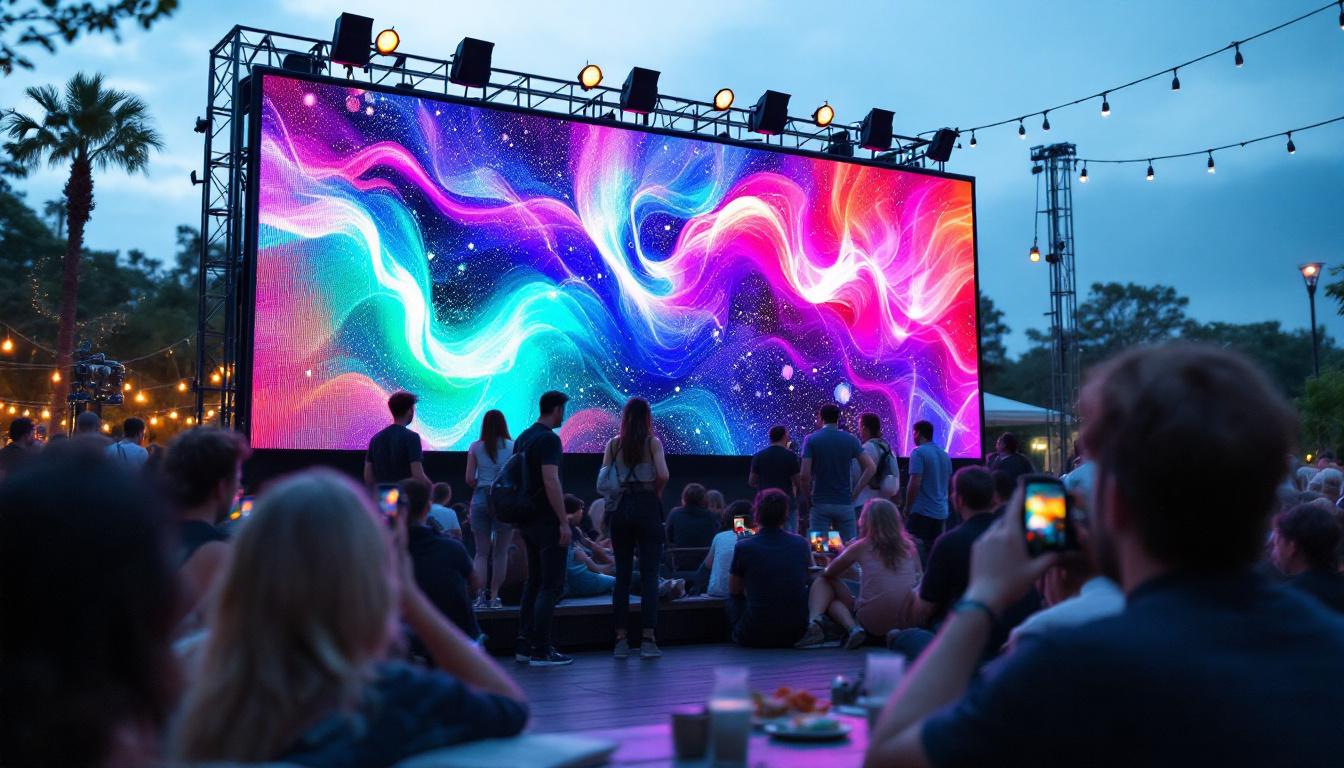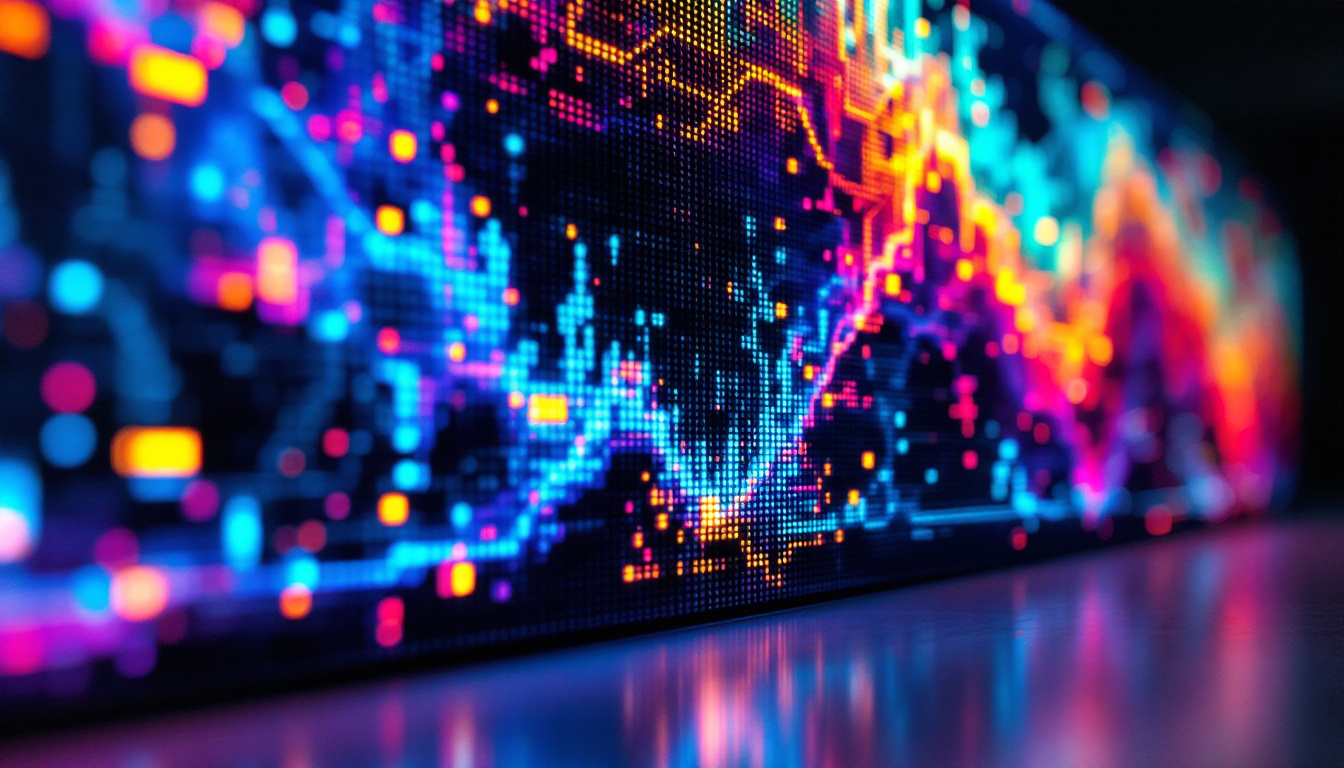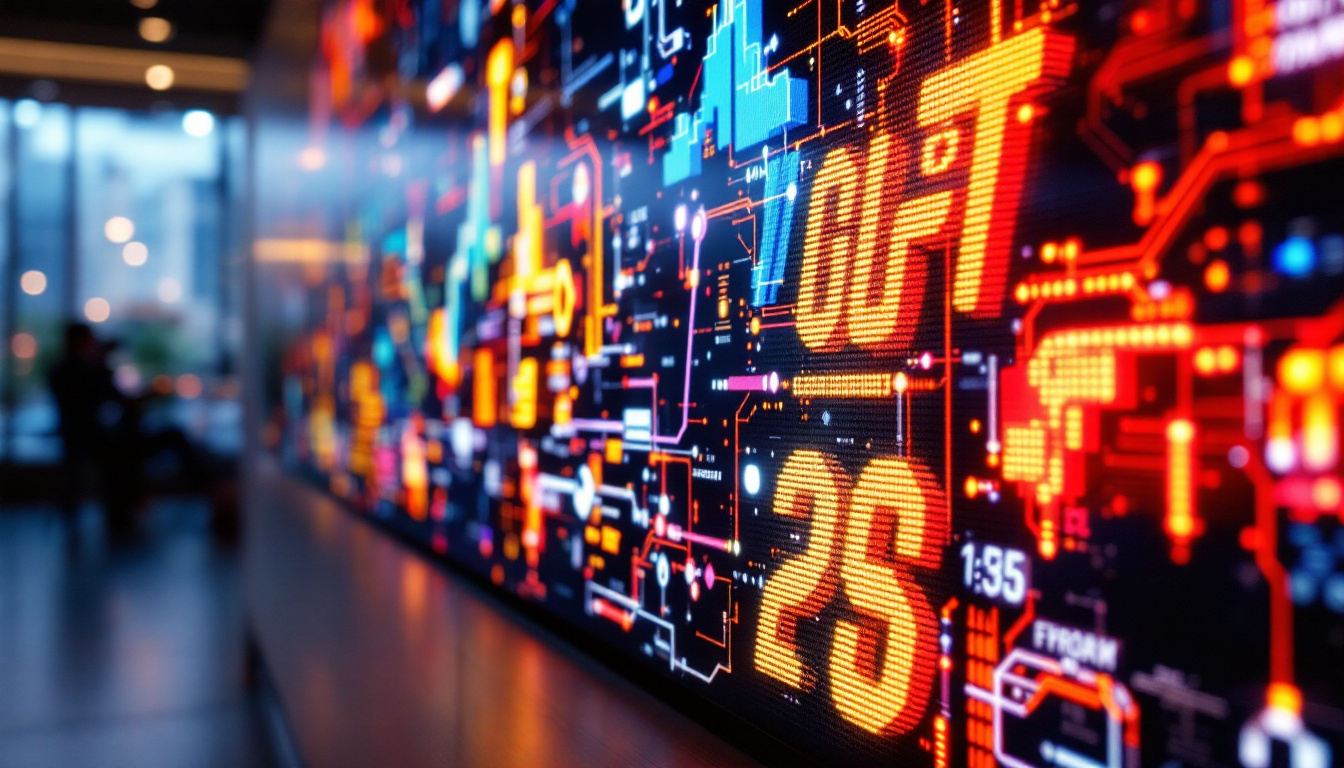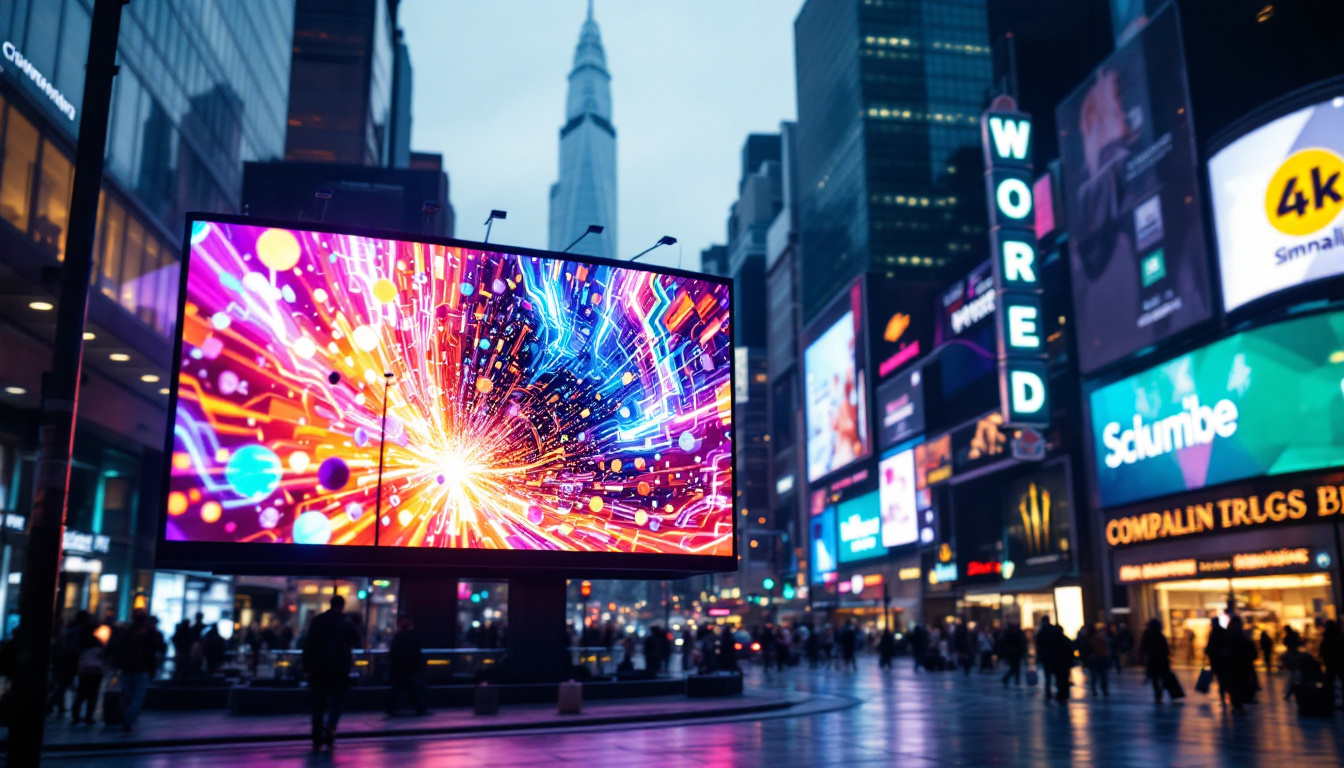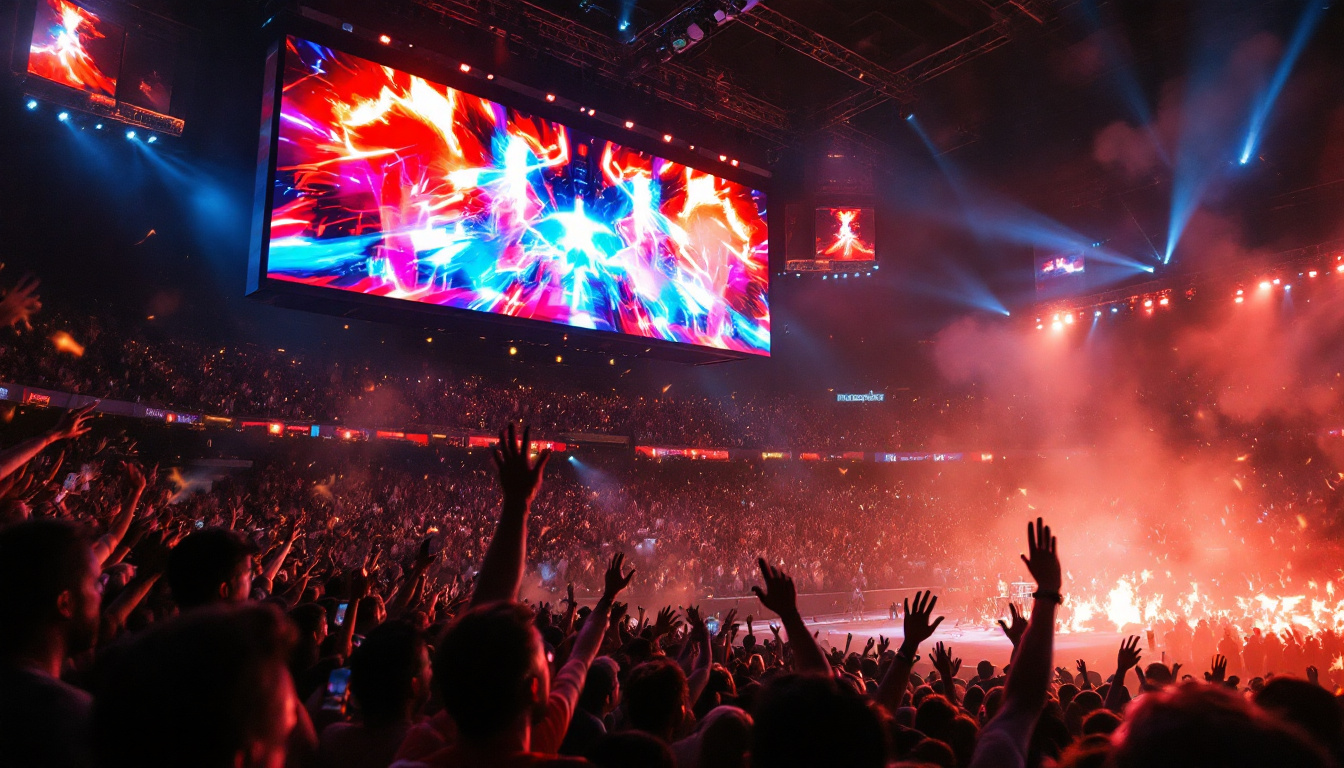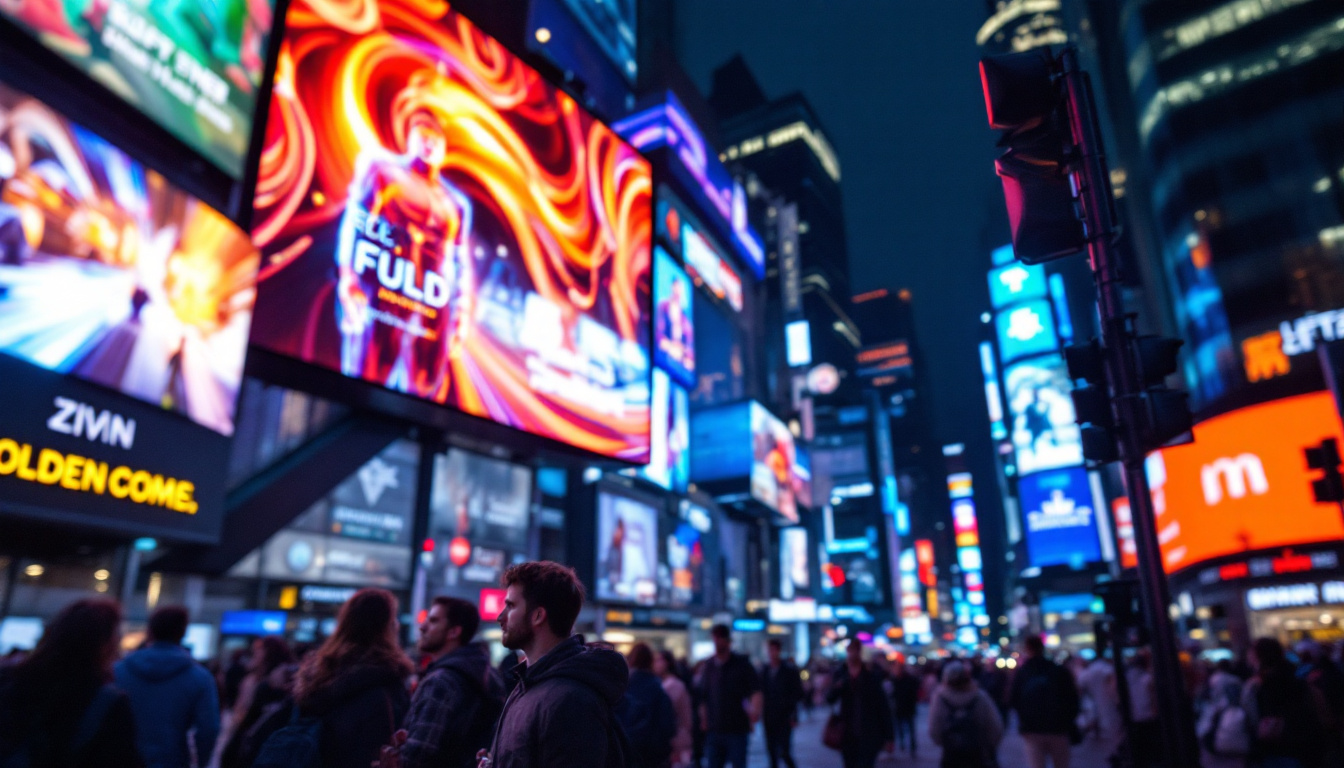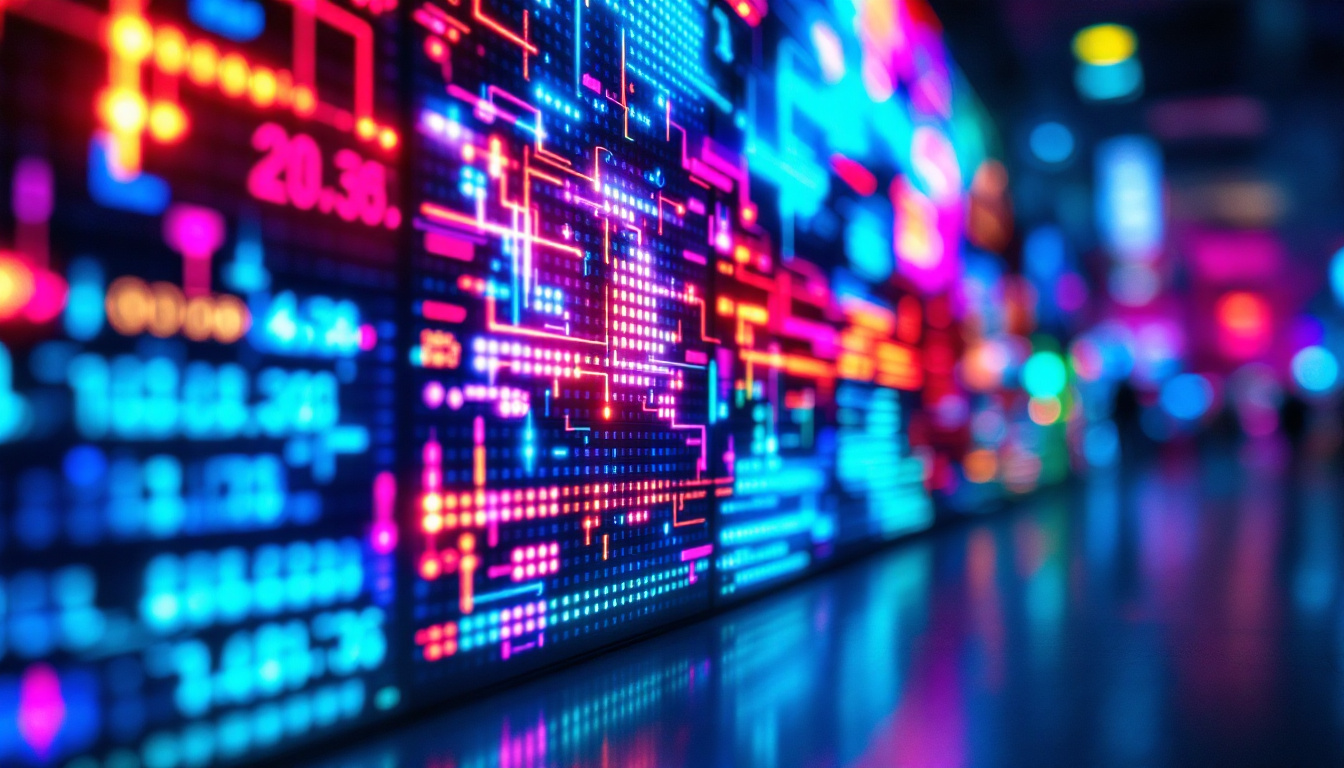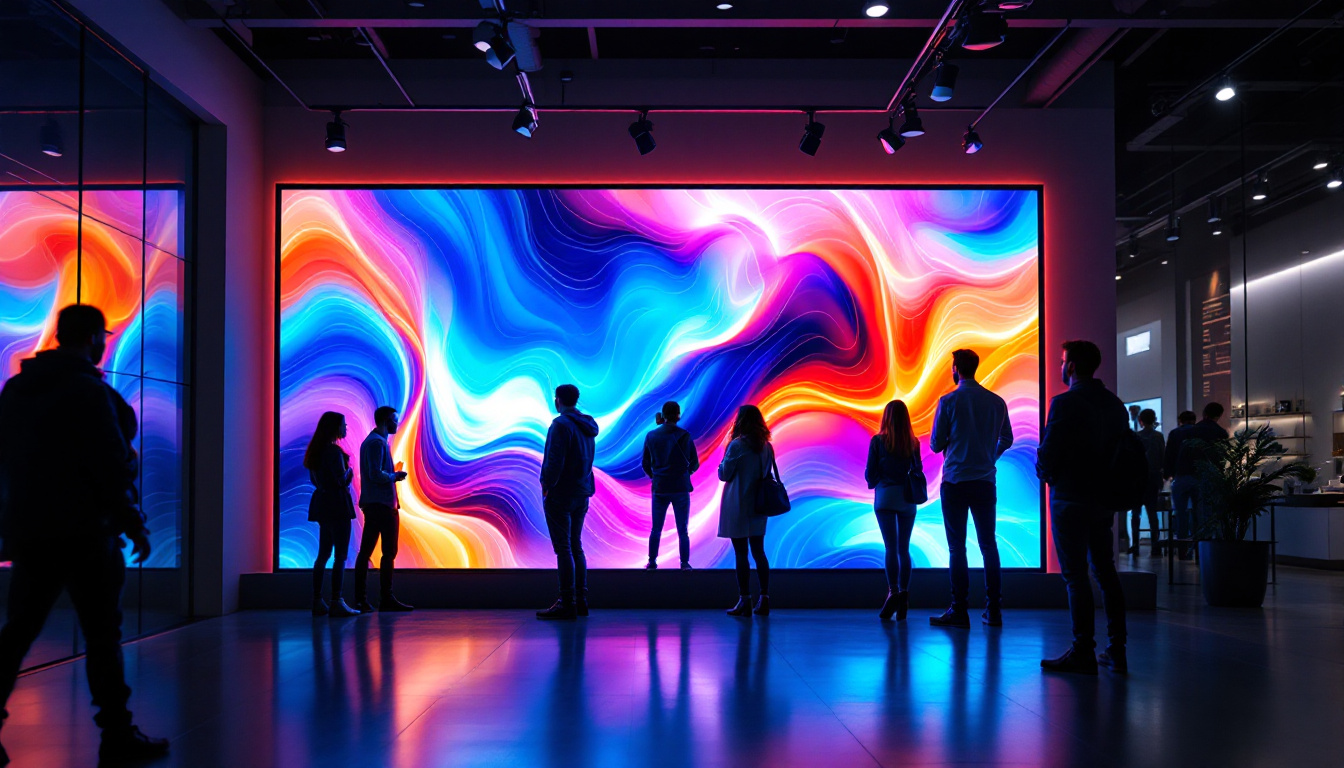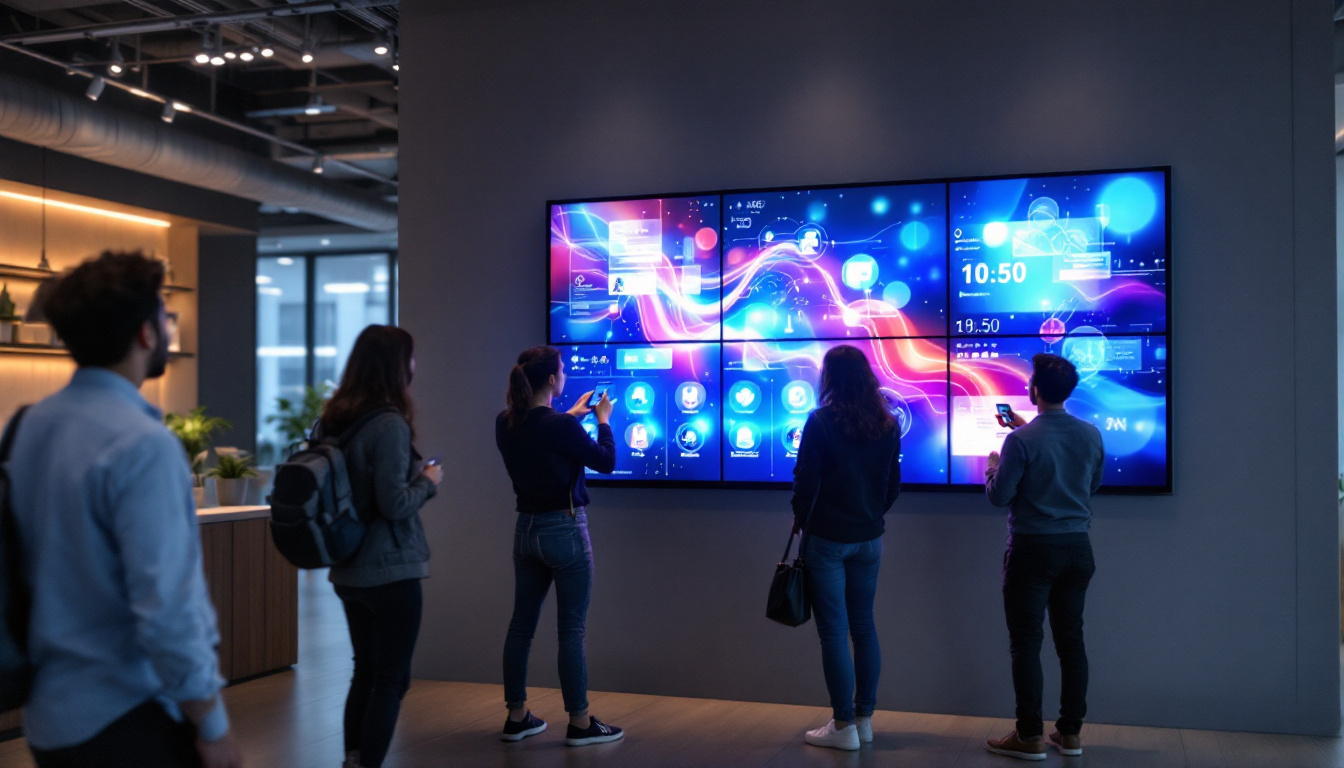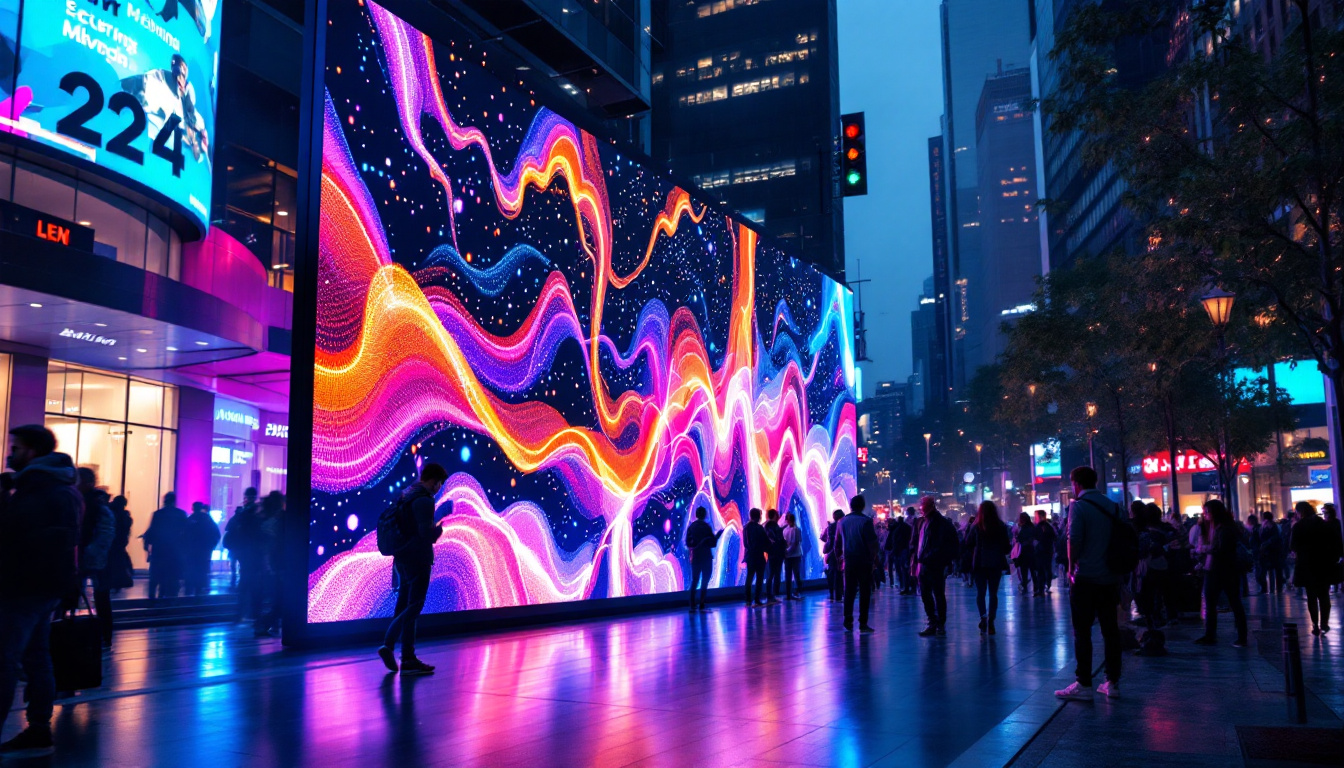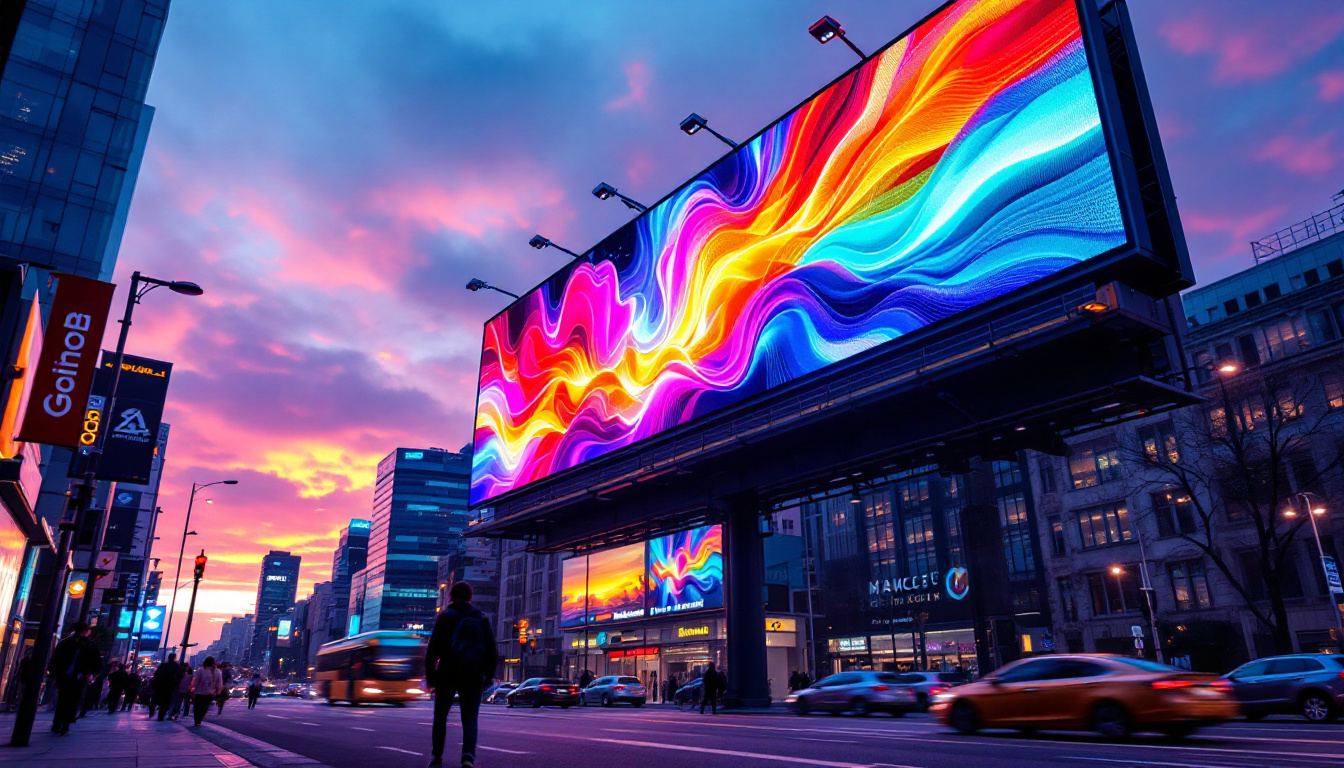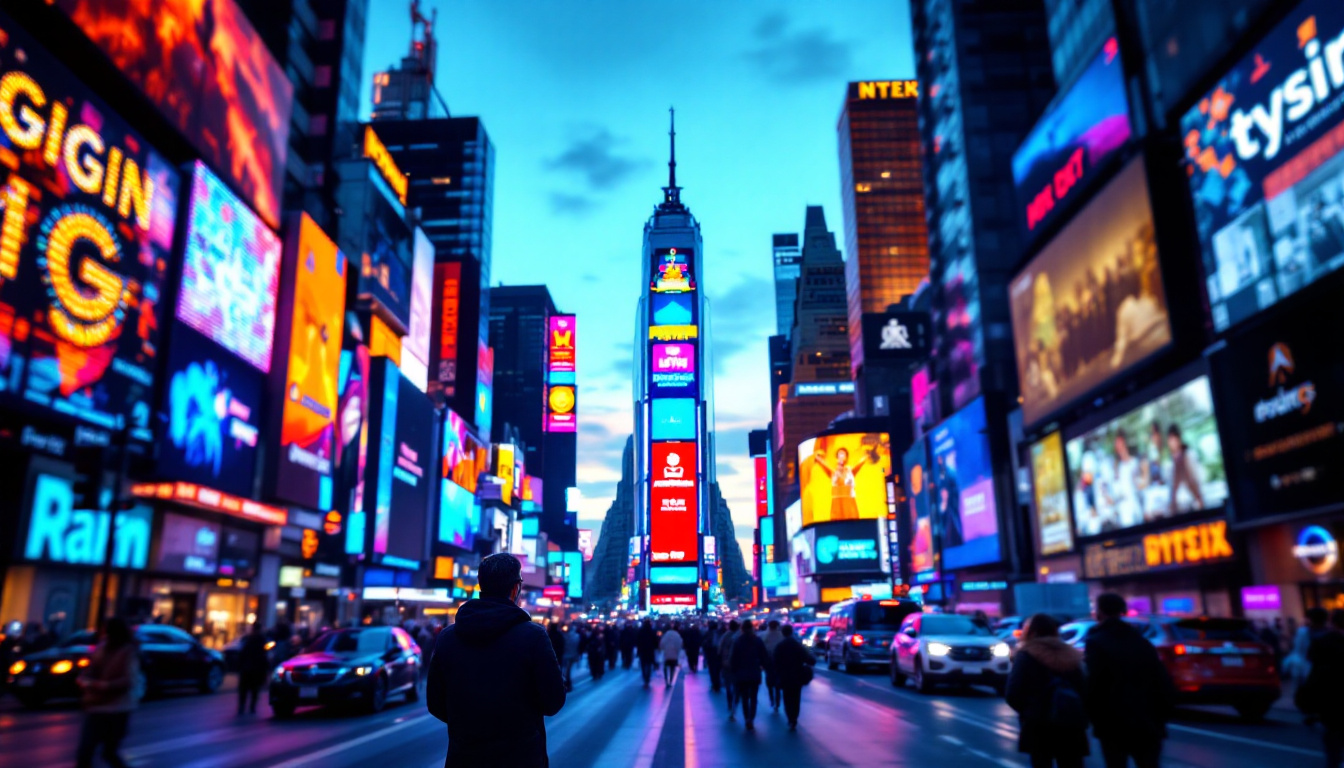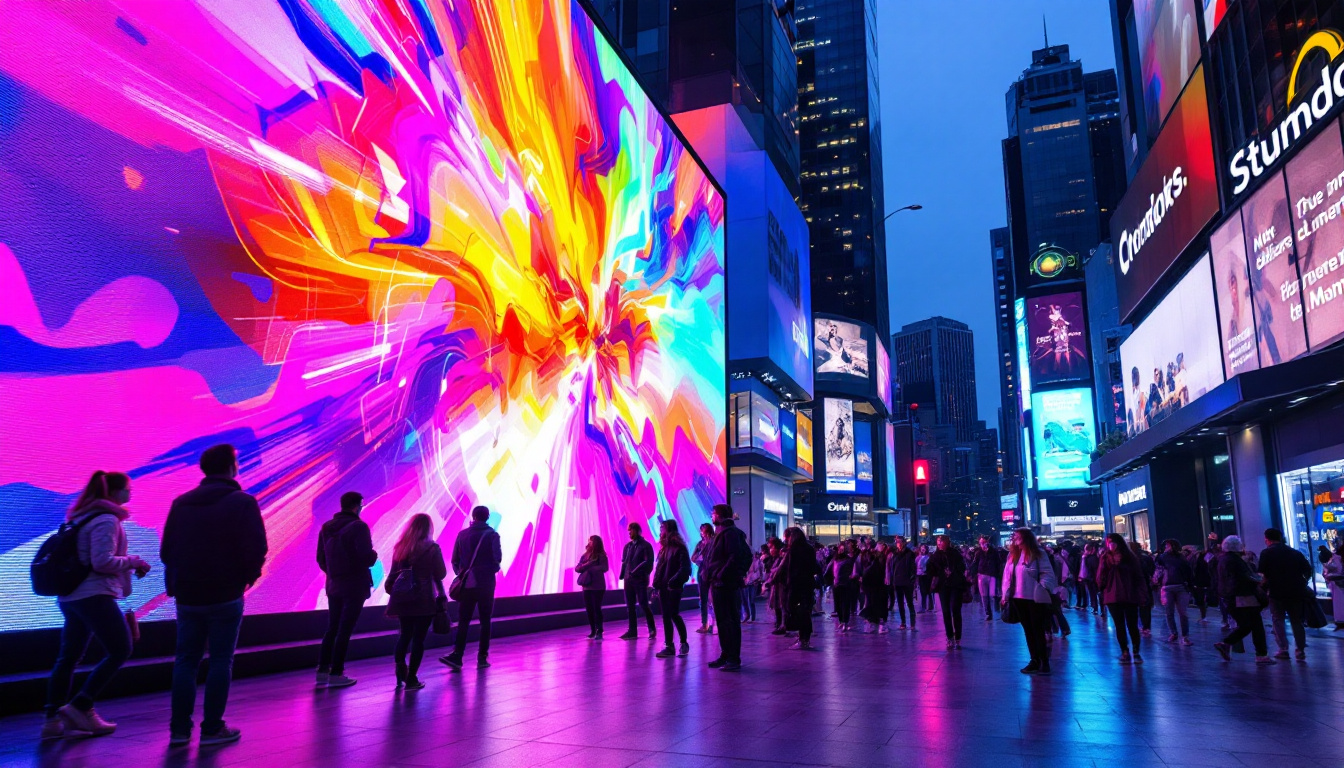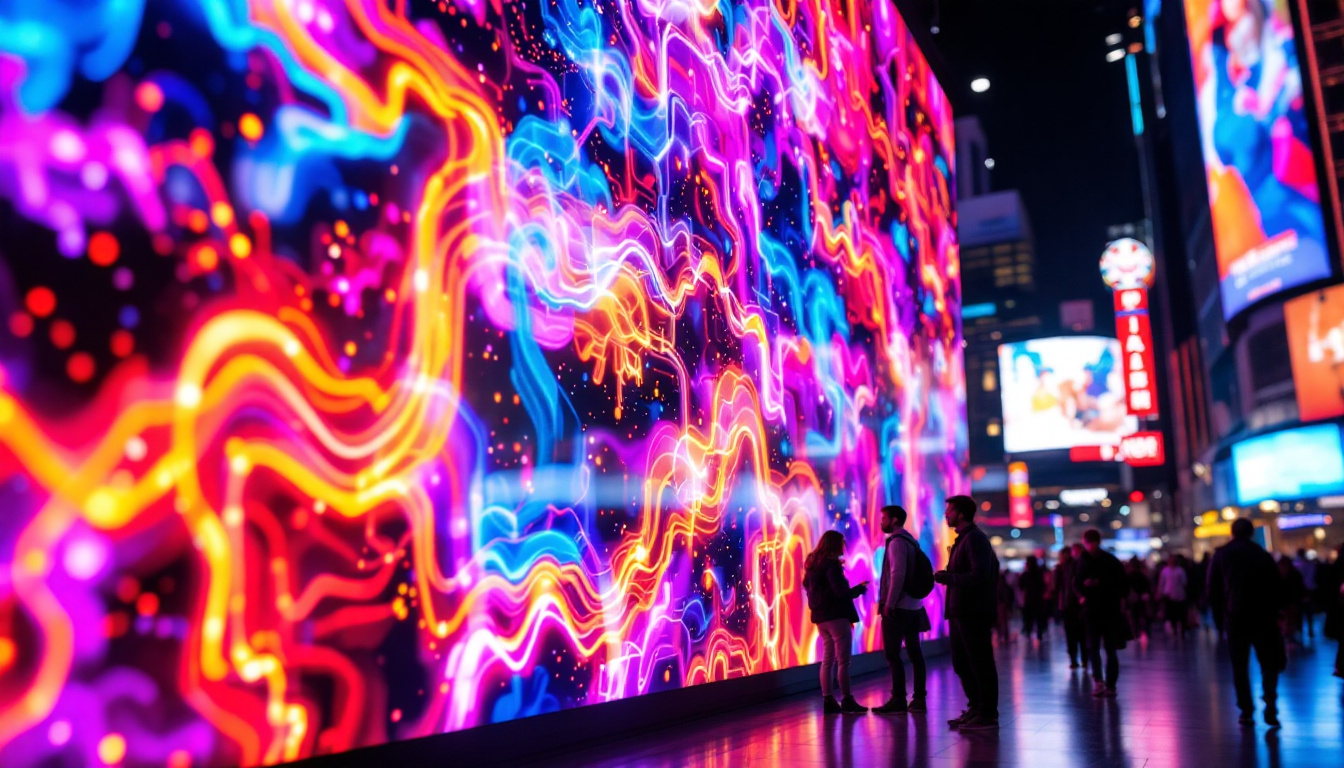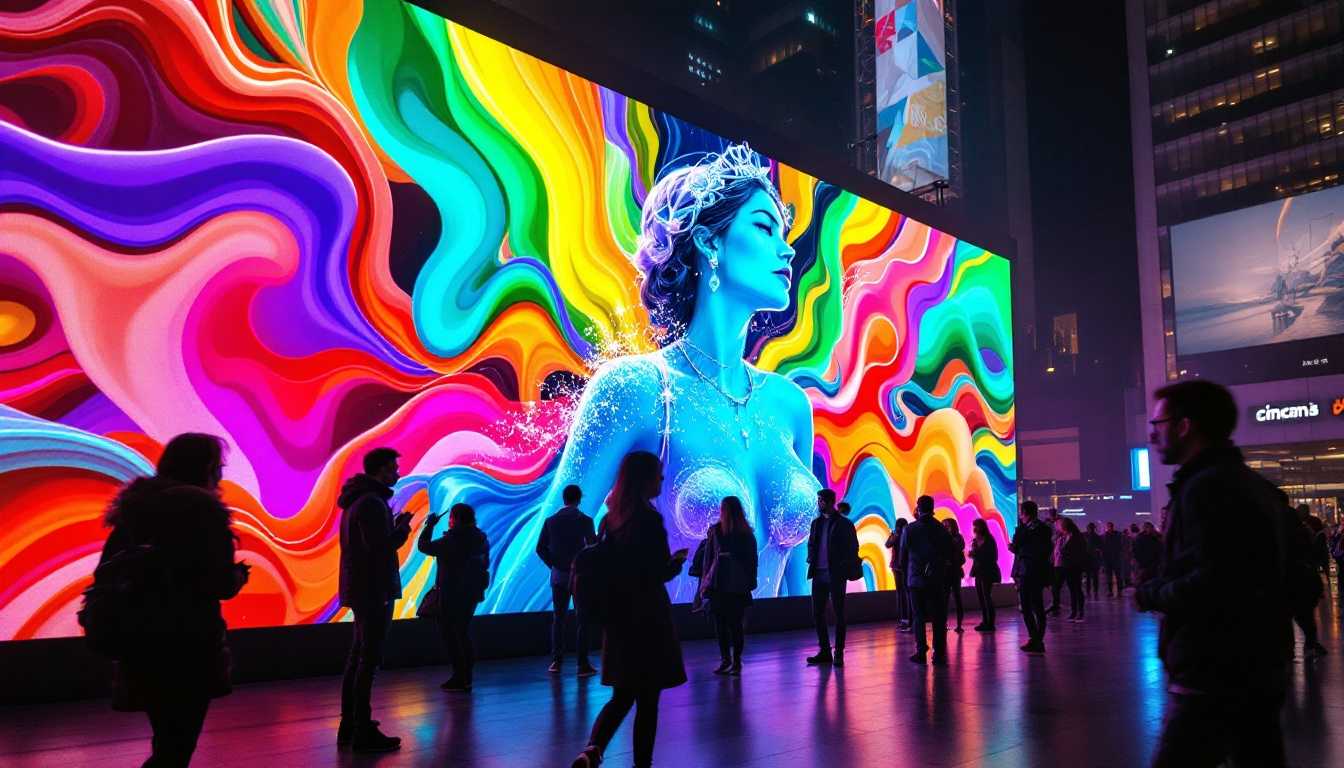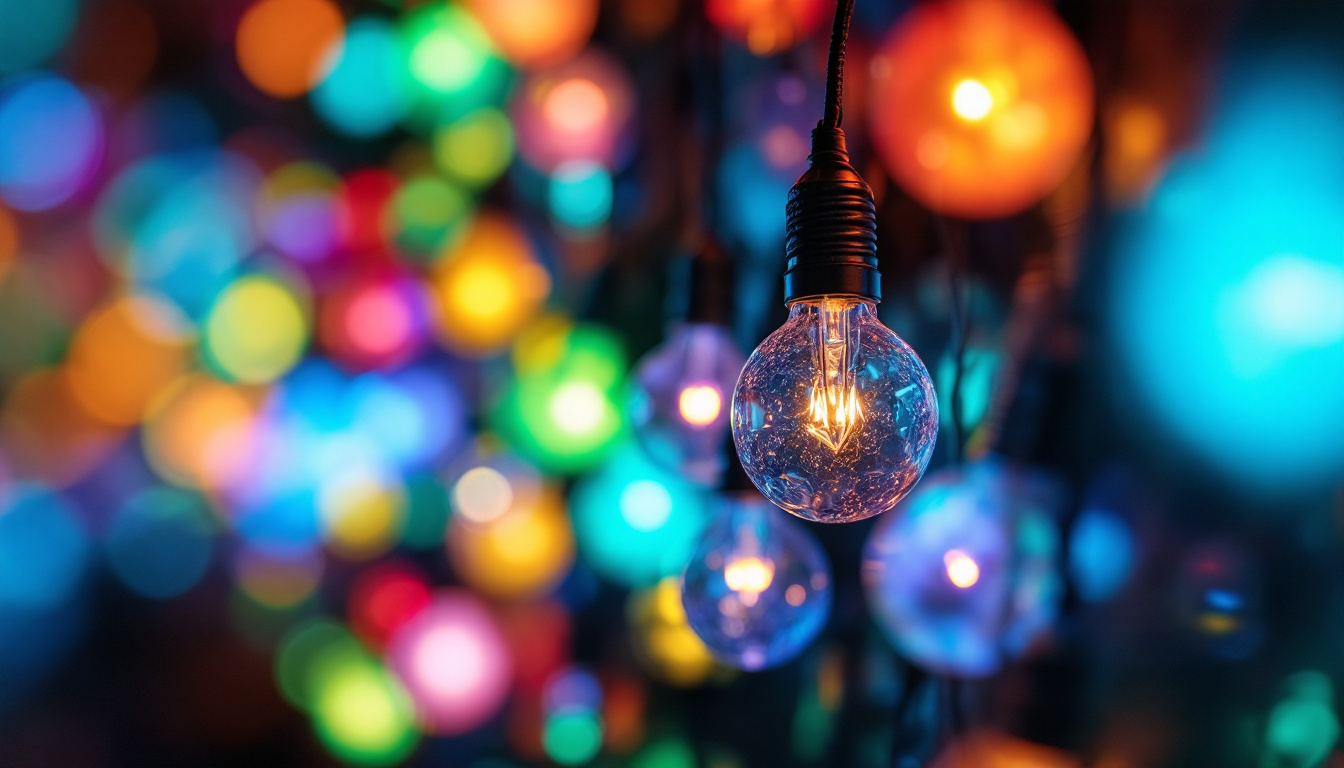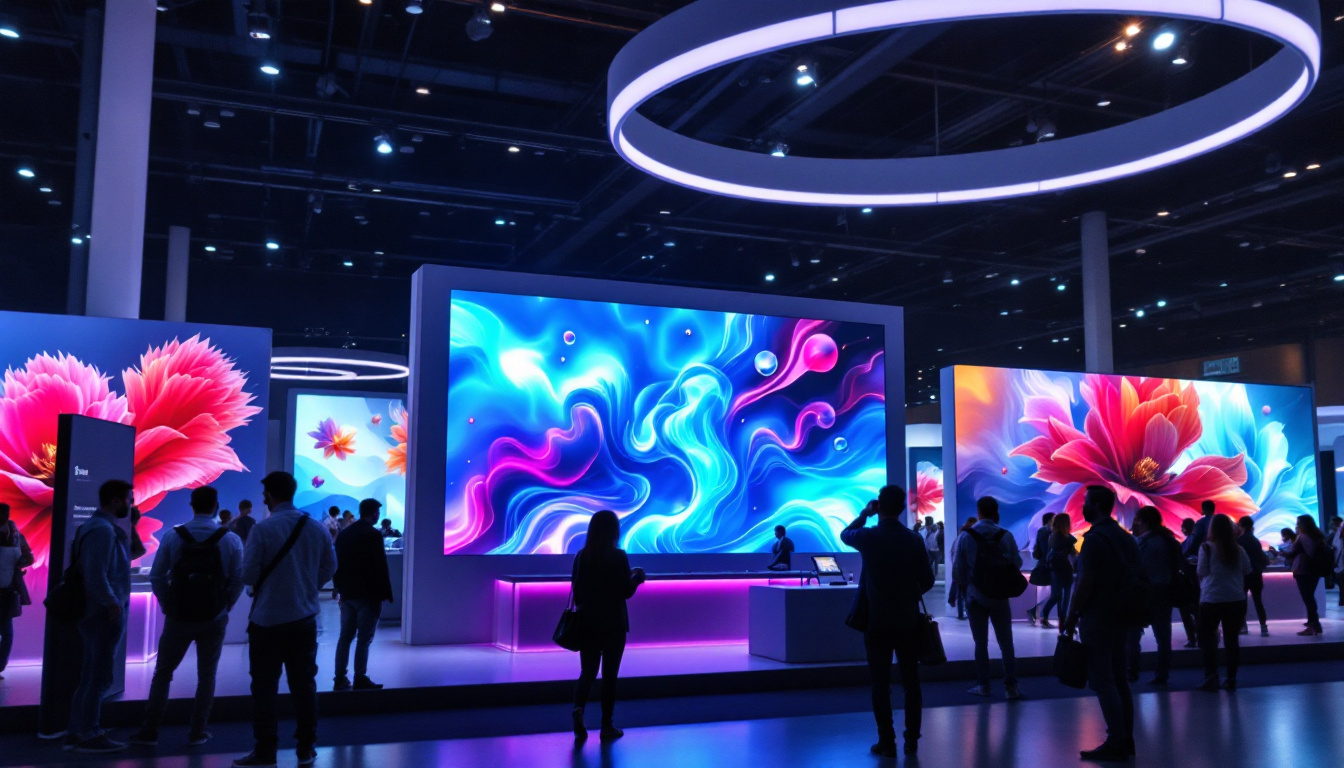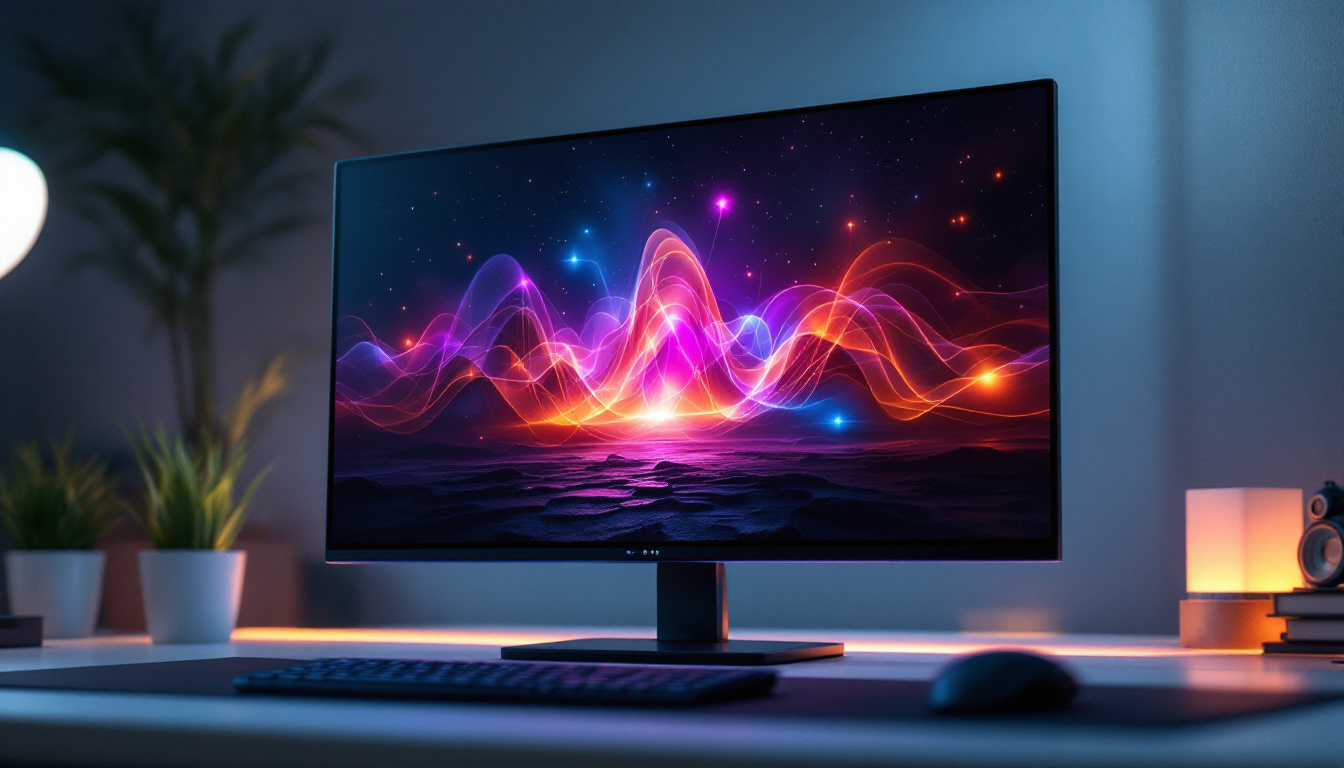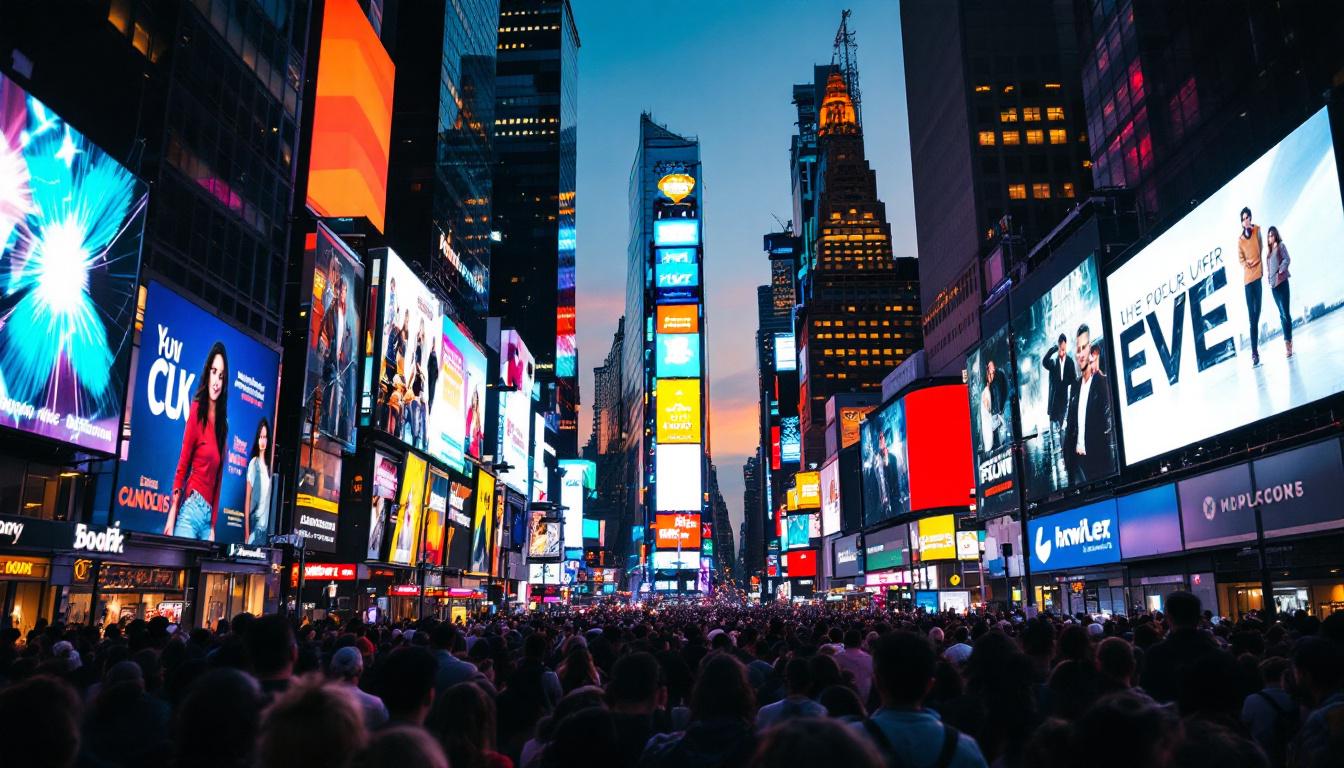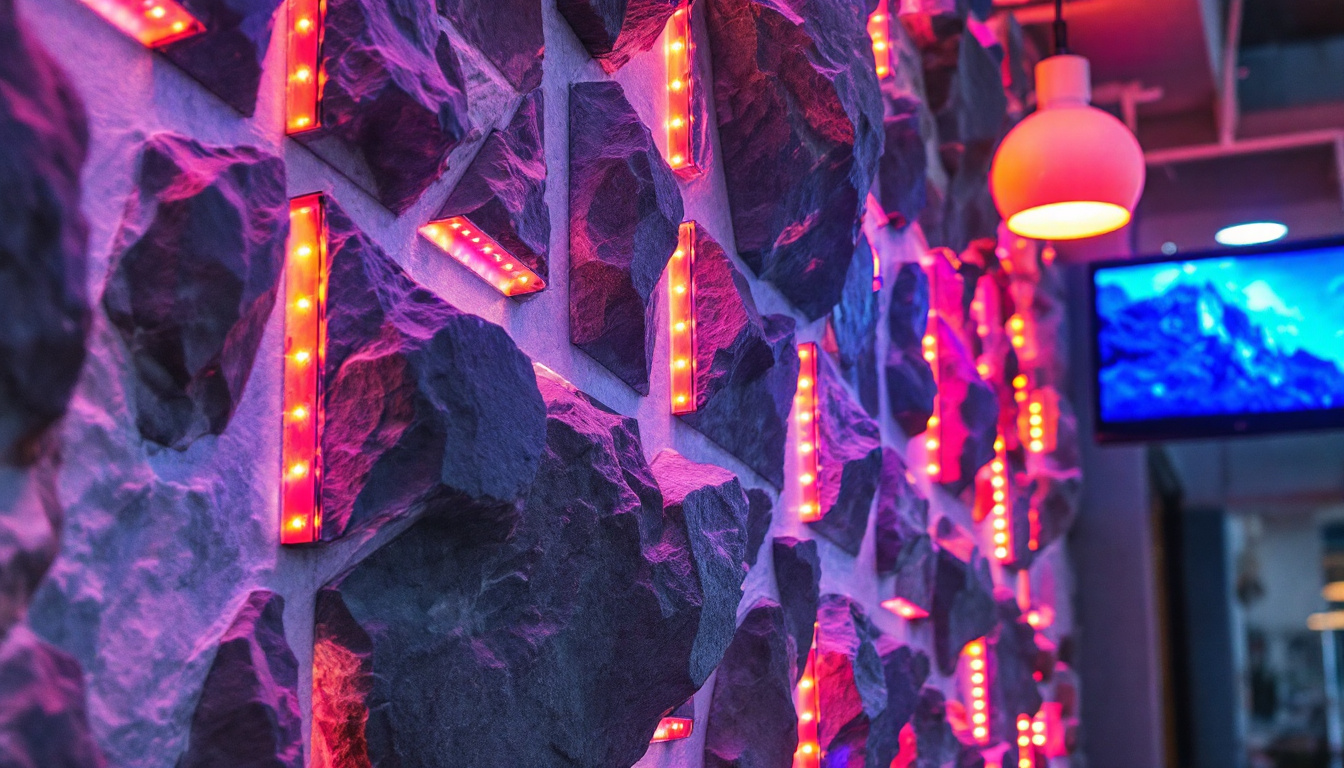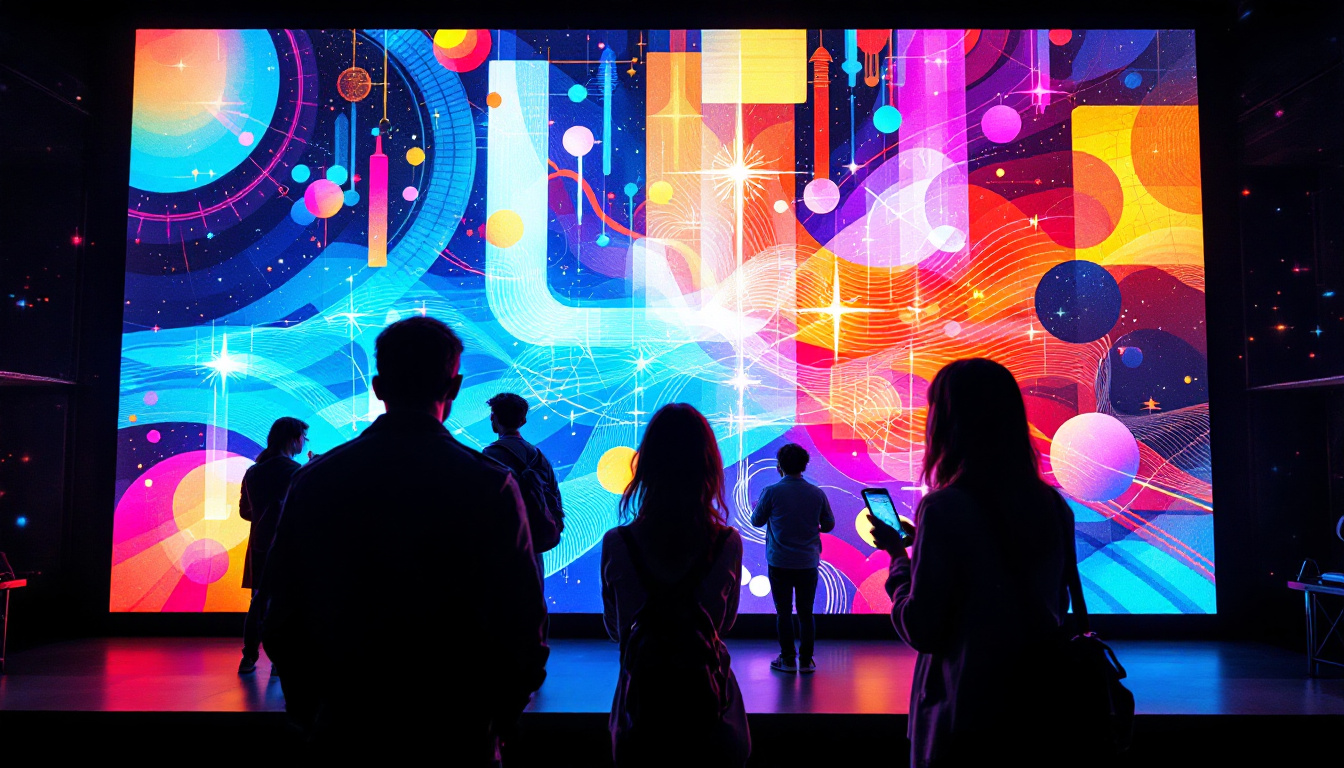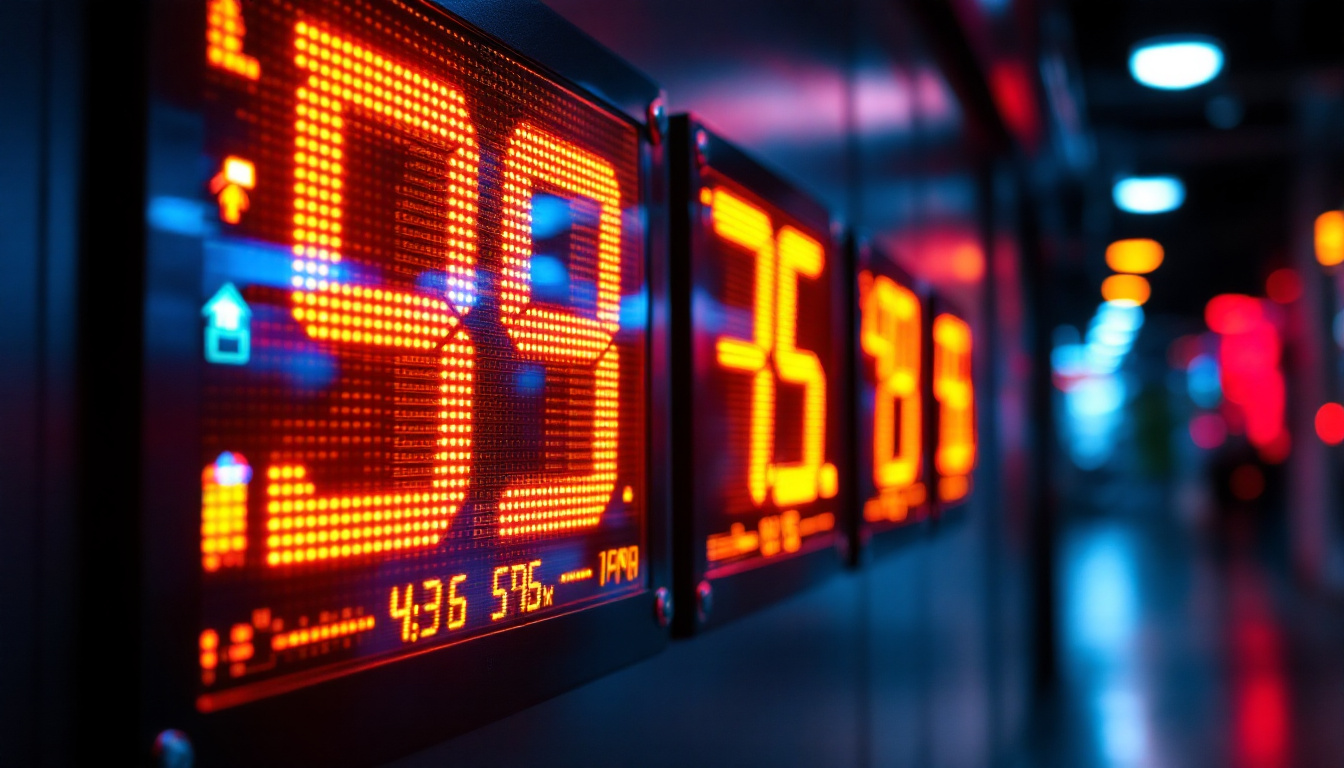In an age where visual communication is paramount, LED matrix signs have emerged as a powerful medium for conveying messages. These displays are not only vibrant and eye-catching but also versatile and efficient. This article delves into the intricacies of LED matrix signs, exploring their functionality, applications, and the technology that powers them.
What is an LED Matrix Sign?
An LED matrix sign consists of a grid of light-emitting diodes (LEDs) arranged in a matrix format. Each LED can be individually controlled, allowing for the display of various patterns, colors, and text. This capability makes LED matrix signs ideal for dynamic advertising, public announcements, and artistic displays. The versatility of these signs means they can be programmed to display anything from simple messages to intricate animations, making them a powerful tool for communication in both commercial and artistic contexts.
Structure and Components
The basic structure of an LED matrix sign includes several key components: the LED modules, control systems, and power supply. The LED modules are the heart of the display, comprising multiple LEDs arranged in rows and columns. These modules can be combined to create larger displays, enabling a wide range of sizes and resolutions. The arrangement of LEDs can vary, with options for different pixel pitches, which affects the clarity and detail of the images displayed. For instance, a smaller pixel pitch results in a higher resolution, making it suitable for close viewing distances.
The control system is responsible for managing the content displayed on the matrix. It interprets data from various sources, such as computers or media players, and sends the appropriate signals to the LED modules. This system can be programmed to change content in real-time, allowing for spontaneous updates based on current events or promotions. The power supply ensures that the LEDs receive the necessary voltage and current to function effectively, and it often includes features to manage energy consumption, which is crucial for both cost savings and environmental considerations.
Types of LED Matrix Signs
LED matrix signs come in various types, each designed for specific applications. Indoor LED displays are typically used in venues such as theaters, shopping malls, and conference centers, where they can provide information and entertainment to audiences. These displays often feature high brightness and contrast ratios to ensure visibility even in well-lit environments. Outdoor LED displays, on the other hand, are built to withstand harsh weather conditions and are often used for billboards and signage along highways. These displays are engineered with protective casings and advanced cooling systems to maintain performance in extreme temperatures and exposure to the elements.
Another category includes flexible LED displays, which can be bent and shaped to fit unique designs. These are increasingly popular for creative installations in art and advertising, allowing for innovative presentations that capture attention. The flexibility of these displays opens up new avenues for creativity, enabling artists and advertisers to create immersive environments that engage viewers in unexpected ways. Additionally, advancements in technology have led to the development of transparent LED displays, which can be integrated into windows and glass surfaces, providing a futuristic aesthetic while still allowing visibility through the display. This innovation is particularly appealing for retail environments, where brands can showcase promotions without obstructing the view of their products.
How LED Matrix Signs Work
The functionality of LED matrix signs is rooted in the principles of electronics and programming. Understanding how these signs operate can provide insights into their versatility and effectiveness.
Pixel Control
Each LED in a matrix sign represents a pixel, and the combination of these pixels creates the overall image or text displayed. The control system uses a technique called multiplexing to manage the individual pixels. By rapidly switching the LEDs on and off, the system can create the illusion of a continuous image or animation, even though only a fraction of the LEDs are lit at any given time.
This pixel control allows for a wide range of colors and brightness levels. By adjusting the intensity of each LED, the display can produce millions of color variations, making it suitable for vibrant graphics and detailed images.
Data Transmission
Data transmission is another critical aspect of LED matrix signs. The control system receives input from various sources, such as computers, media players, or sensors. This data is then processed and sent to the LED modules through a series of protocols, ensuring that the correct information is displayed in real-time.
Common communication protocols include RS-232, RS-485, and Ethernet, each offering different advantages in terms of speed, distance, and reliability. The choice of protocol often depends on the specific requirements of the installation and the environment in which the sign will operate.
Applications of LED Matrix Signs
The versatility of LED matrix signs allows them to be used in a wide range of applications across various industries. From advertising to public information, these displays have become an integral part of modern communication strategies.
Advertising and Marketing
One of the most prominent uses of LED matrix signs is in advertising. Businesses leverage these displays to promote products, services, and events in a visually engaging manner. The ability to change content quickly and easily allows advertisers to tailor their messages to specific audiences or times of day, maximizing impact.
Moreover, the dynamic nature of LED displays can capture the attention of passersby, making them more effective than traditional static signage. Animated graphics, scrolling text, and vibrant colors can significantly enhance brand visibility and recognition.
Public Information and Safety
LED matrix signs play a crucial role in disseminating public information, especially in urban environments. They are commonly used for traffic management, providing real-time updates on road conditions, accidents, and weather alerts. This information helps drivers make informed decisions, contributing to overall safety on the roads.
In addition to traffic updates, these signs are also used in public transportation systems to display arrival times, service changes, and emergency notifications. Their visibility and clarity ensure that essential information reaches the public promptly.
Advantages of LED Matrix Signs
The adoption of LED matrix signs has surged due to their numerous advantages over traditional signage methods. These benefits contribute to their growing popularity among businesses and organizations.
Energy Efficiency
One of the most significant advantages of LED technology is its energy efficiency. LED matrix signs consume considerably less power compared to incandescent or fluorescent displays. This not only reduces operational costs but also minimizes environmental impact, making them a more sustainable choice for businesses.
Furthermore, many LED displays come equipped with sensors that adjust brightness based on ambient light conditions. This feature ensures optimal visibility while conserving energy during low-light situations.
Longevity and Durability
LED matrix signs are built to last. With a lifespan of up to 100,000 hours, these displays require minimal maintenance and replacement. Their robust construction makes them resistant to harsh weather conditions, including rain, snow, and extreme temperatures, ensuring reliable performance in outdoor settings.
This durability translates to long-term savings for businesses, as they do not need to frequently replace or repair signage. The investment in LED matrix signs often pays off in the form of reduced maintenance costs and increased visibility.
Challenges and Considerations
While LED matrix signs offer numerous benefits, there are also challenges and considerations that potential users should be aware of. Understanding these factors can help in making informed decisions regarding their implementation.
Initial Costs
The initial investment for LED matrix signs can be higher than traditional signage options. The cost of the display, installation, and necessary infrastructure can add up, making it a significant financial commitment for some businesses.
However, it is essential to consider the long-term savings associated with energy efficiency and reduced maintenance. Many businesses find that the return on investment justifies the upfront costs, especially when factoring in the enhanced visibility and engagement that LED displays provide.
Content Management
Managing content on LED matrix signs requires a certain level of technical expertise. Businesses must ensure that they have the necessary software and training to create and update content effectively. This can be a barrier for some organizations, particularly smaller businesses without dedicated marketing teams.
Fortunately, many manufacturers offer user-friendly software solutions that simplify content management. Investing in training and support can also help businesses maximize the potential of their LED displays.
Future Trends in LED Matrix Technology
The future of LED matrix signs is promising, with ongoing advancements in technology and design. As the demand for dynamic and engaging displays continues to grow, several trends are emerging in the industry.
Smart Integration
One of the most significant trends is the integration of smart technology into LED matrix signs. With the rise of the Internet of Things (IoT), these displays can now connect to the internet, allowing for real-time data updates and remote management. This capability enables businesses to respond quickly to changing conditions and audience needs.
Smart LED signs can also incorporate features such as audience analytics, which provide insights into viewer demographics and engagement levels. This data can inform marketing strategies and improve the effectiveness of advertising campaigns.
Improved Resolution and Flexibility
As technology advances, the resolution of LED matrix signs continues to improve. Higher pixel densities allow for more detailed images and graphics, enhancing the overall visual experience. Additionally, flexible LED displays are becoming more prevalent, enabling creative installations that can adapt to various environments and designs.
This flexibility opens up new possibilities for artistic expression and innovative advertising, allowing businesses to stand out in a crowded marketplace.
Conclusion
LED matrix signs represent a significant advancement in visual communication, offering businesses and organizations a dynamic and effective way to engage with their audiences. With their energy efficiency, durability, and versatility, these displays have become essential tools in advertising, public information, and beyond.
As technology continues to evolve, the potential applications and capabilities of LED matrix signs will only expand. Embracing this technology can provide a competitive edge, ensuring that messages are not only seen but also remembered in an increasingly visual world.
Discover LumenMatrix’s Innovative LED Displays
Ready to elevate your visual communication strategy with cutting-edge LED technology? LumenMatrix is at the forefront of LED display innovation, offering an extensive range of solutions tailored to your unique needs. From vibrant Indoor and Outdoor LED Wall Displays to versatile Vehicle and Floor LED Displays, our products are designed to captivate and engage your audience. Experience the transformative power of our Custom, All-in-One, and Transparent LED Displays. Check out LumenMatrix LED Display Solutions today and bring your brand’s message to life with unparalleled clarity and impact.


